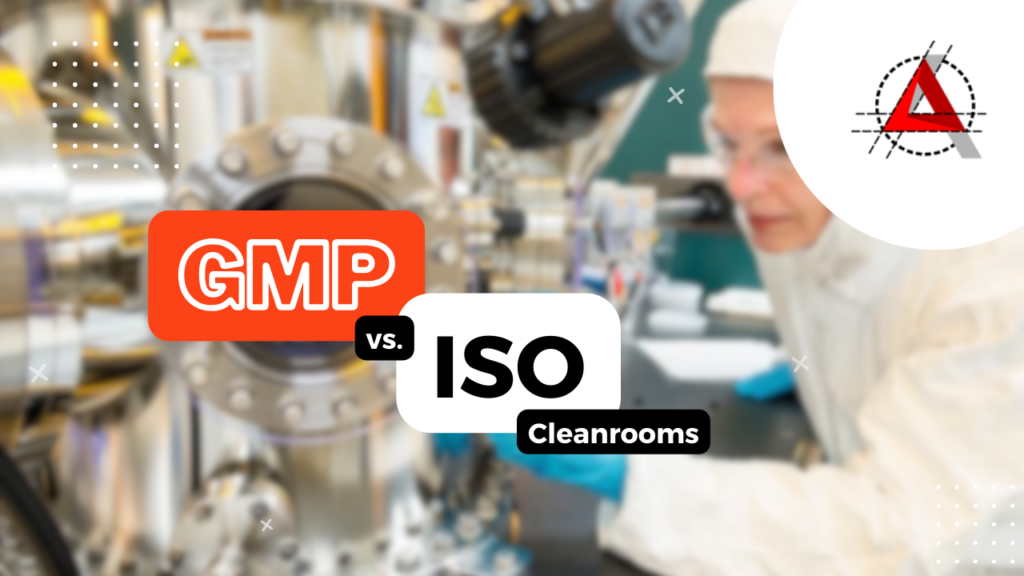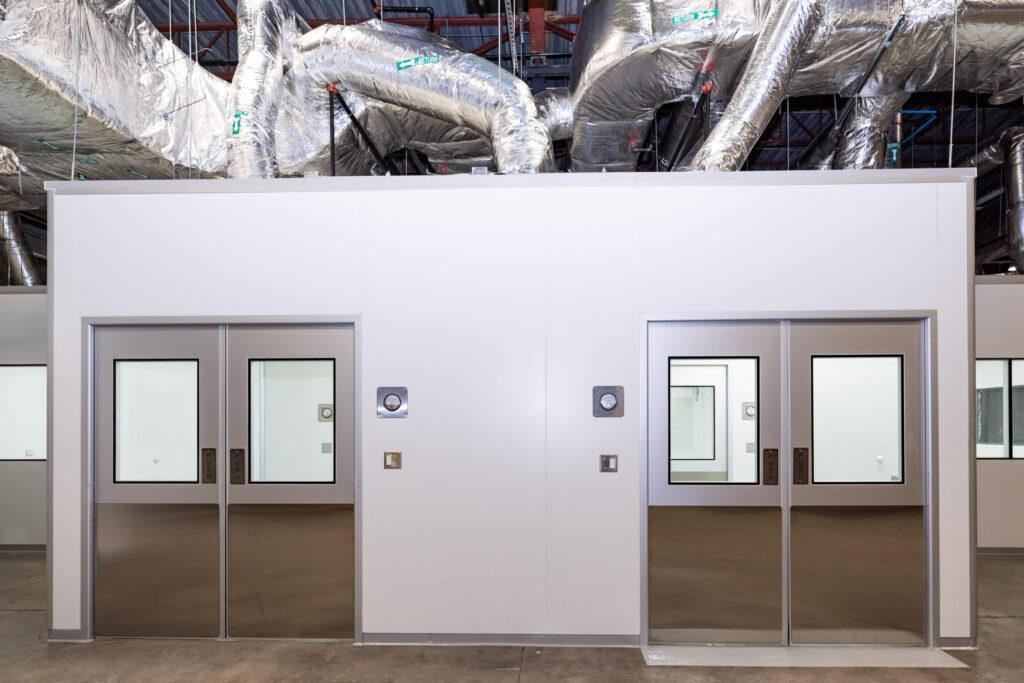GMP vs. ISO for Cleanrooms

Good Manufacturing Practice (GMP) and International Organization for Standardization (ISO) are two significant names in the area of cleanroom norms. While they fulfill separate functions and have various criteria, both are essential in guaranteeing the quality and safety of goods. Clarifying the distinctions and parallels between ISO and GMP cleanroom regulations is the goal of this blog.
What is GMP?
An approach known as Good Manufacturing Practice, or GMP, guarantees that goods are regularly manufactured and monitored in accordance with specifications for quality. It is intended to reduce the risk that associated with producing pharmaceuticals that cannot be avoided by evaluating the finished product.
Key Aspects of GMP:
- Quality Management: Highlights the importance of an exhaustive strategy to quality control
- Documentation: Demands complete documentation at each step of the production process.
- Personnel: Emphasizes on the abilities, guidance, and personal hygiene of staff members.
- Facilities and Equipment: Specifies strict guidelines for the construction and upkeep of buildings and machinery.
- Validation and Qualification: Makes sure that procedures and processes are verified to deliver consistently high-quality.
- Complaints and Recalls: Regulates the processes for managing recalls and issues.
Regulatory bodies like the European Medicines Agency (EMA) and the U.S. Food and Drug Administration (FDA) enforce GMP requirements.

What is ISO?
Cleanroom standards are among the many that are created and transmitted by the International Organization for Standardization (ISO). The ISO 14644 series, which outlines the methods for inspecting and monitoring cleanroom environments as well as the categorization of air cleanliness, is the most suitable collection of ISO standards for cleanrooms.
Key Aspects of ISO:
- Standardization: suggests a structure for bringing procedures and regulations into compliance on a global scale.
- Air Cleanliness Classification: Classifies air quality according to the concentration of particles.
- Testing and Monitoring: Describes how to measure and keep track on the performance of the cleanroom.
- Design and Construction: Provides specifications for the layout, building, and operation of cleanrooms.
- Maintenance and Operation: Comprises guidelines for keeping and using cleanrooms to maintain the required standards of cleanliness.
Electronics, biotechnology, and the pharmaceutical industry are just a few of the industries that have embraced ISO standards.
Key Differences Between GMP and ISO
| GMP | ISO | |
|---|---|---|
| Scope and Application: | Focuses on product quality and safety throughout the manufacturing process, primarily applicable to the biotechnology and pharmaceutical industries. | Covers a wider spectrum of sectors and offers a standardized method for the design, building, and operation of cleanrooms. |
| Regulatory vs Voluntary: | Imposed by rules and regulations, necessitating compliance for businesses in regulated sectors. | Frequently accepted as best practices, with certified bodies offering certification. |
| Focus Areas: | Places a strong emphasis on total quality management, which includes process validation, documentation, and employee training. | Focuses on the classification and management of cleanroom conditions, encompassing particle monitoring and air cleanliness. |
Key Similarities Between GMP and ISO
Quality Assurance:
The goal of both GMP and ISO standards is to guarantee high-quality products through controlled conditions and the reduction of contamination hazards.
Documentation:
Both demand extensive documentation, but GMP emphasizes keeping meticulous records of the production process more than the other.
Continuous Improvement:
Both standards support ongoing process testing, monitoring, and upgrading to promote continuous improvement.

Which Standard Should You Choose?
The decision between GMP and ISO is based on your industry and particular requirements. GMP adherence is essential for pharmaceutical and biotech businesses to ensure product safety and regulatory approval. The ISO standards offer other industries a solid foundation for upholding cleanroom conditions and guaranteeing the quality of their products.
Organizations may frequently have to abide by both ISO and GMP requirements. For example, a pharmaceutical company may implement ISO standards to improve their cleanroom operations and adhere to GMP for regulatory compliance.
Both GMP and ISO, with their distinct requirements and areas of attention, are vital to the upkeep of cleanroom standards. You can choose which of these standards to apply in your cleanroom operations by being aware of the variations and similarities between them. You can guarantee product quality, safety, and consistency by upholding these standards, which will safeguard customers and improve the credibility of your organization.
Are you prepared to raise the bar on your cleanroom operations? We at ACH [A Cleanroom Hub] offer comprehensive cleanroom solutions that guarantee complete adherence to ISO and GMP requirements. Our team of experts takes care of everything, from design to validation, providing specialized, innovative cleanrooms that are matched to your unique requirements. For a free consultation and to learn how our solutions can revolutionize your facilities, get in touch with us today.
GET IN TOUCH
Complete the form below to get in touch with our team.
